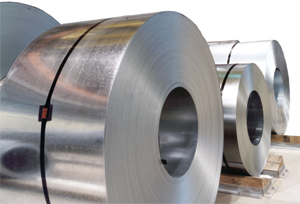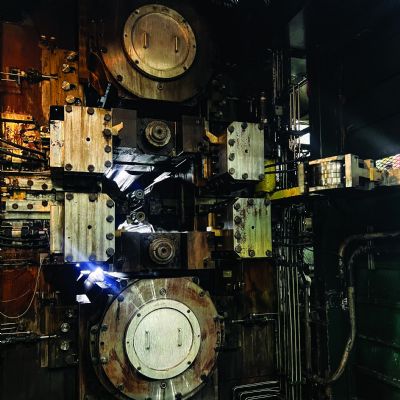Tips for Processing High-Strength-Steel Coils
February 1, 2009Comments
For precision stampers that want to produce superior parts utilizing high-strength low-alloy (HSLA) steel from slit coil, the following tips will make the job easier, and more profitable.
The starting coil of HSLA steel is critical in producing quality parts. Therefore, stampers should include with their purchase orders the following specifications:
 |
• Thickness tolerance
• Width tolerance
• Camber
• Edge condition
• Finish ID and OD
• Material shape.
Width tolerance will depend on the starting width and gauge of the coil, and should be discussed with the coil supplier as the part is being engineered to avoid tooling problems and minimize scrap loss.
Camber—HSLA steel can be difficult to slit, and the slitting process can create camber. Camber—the greatest deviation of side edge from a straight line over a specified measurement of strip—can make feeding the coil into the die very difficult, if not impossible. Slitter-induced camber often is caused by unequal clearance of the strip sides. Unbalanced clearance results in a different shear/fracture ratio on each side of the strip. The fracture tends to be stress-free, while the shear section tends to induce stress in the strip edge. Therefore, the edge with more shear will force curvature into the strip toward the edge with less shear. A setup that uses a combination of dull and sharp knives also can cause an uneven shear/fracture ratio, even if the clearance is balanced. Maintaining a set of sharp knives will help prevent camber from being induced into a coil. Also note that all slitting equipment is not designed the same—some pull-through slitting lines can induce camber into a coil of HSLA steel if the strands are not pulled evenly.
Edge condition of the starting strip is critical. If the strip has excess burrs caused by slitting, the burrs will build on the edge of the strip and cause it to take on a convex or concave shape. This shape can transfer to the part during stamping, causing rejections or rework. Edge cracking also can result, if there is a heavy burr created from slitting and the coil is tension-leveled to correct shape. If an edge crack does occur, the stamper would have to increase the scrap trim in the die to ensure removal of the cracking, causing additional scrap. Again, discuss edge condition required for the part with the coil processor before ordering, and specify it on your purchase order.
Finish ID and OD—The advantages of reducing the gauge of the steel may be minimized if attention is not paid to ID and OD specifications. Stampers that fail to order coils to meet maximum OD requirements wind up changing more coils, which increases downtime and the time it takes to either end-weld coils or refeed coils into the press. This lost production time adds up to costly hours of downtime. Minimize these costs by working with your steel processor to consistently maximize coil size.
Material shape—Some coil slitters use tension-leveling, after the stock is slit, to correct the shape created during slitting. If not performed correctly, this process can workharden the steel. While the steel properties may still fall within specification, the material may lack consistency, as some portions of the coil will have workhardened more than others and may form differently in the die.
Almetals, Wixom, MI, 248/348-7722; and Atlanta, GA, 770/745-7004; www.almetals.com
View Glossary of Metalforming Terms
See also: Almetals, Inc.
Technologies: Materials







